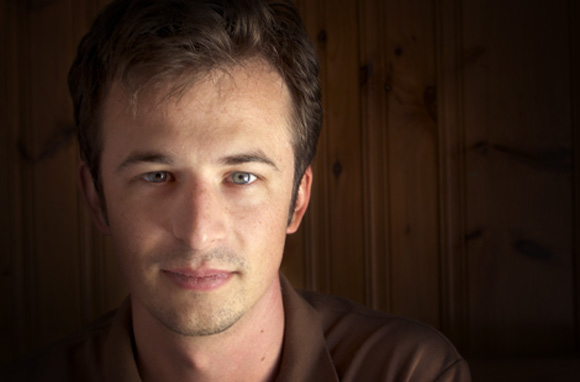From physics to finance

From physics to finance
- January 4, 2013
- UCI prof explores the physics of Wall Street in new book
 When U.S. markets crashed in 2008, James Weatherall was completing his Ph.D. in physics
and mathematics less than five miles from Wall Street. A financially strapped grad
student, he didn’t really have a monetary interest at stake, but he was keenly interested
in how it all went down.
When U.S. markets crashed in 2008, James Weatherall was completing his Ph.D. in physics
and mathematics less than five miles from Wall Street. A financially strapped grad
student, he didn’t really have a monetary interest at stake, but he was keenly interested
in how it all went down.
“Derivatives, these complicated financial products that require the use of mathematical models to understand, seemed to be at the heart of the collapse,” says Weatherall, now a logic & philosophy of science assistant professor at UCI.
Finger pointing put the mathematicians and physicists behind these models in the spotlight as financiers and others called into question scientists’ place in the financial world. With Harvard physics and philosophy degrees under his belt and his first Ph.D. in sight, Weatherall couldn’t stay out of the fray.
“The only way you can pull down the national economy is if you work for one of these multibillion dollar hedge funds," he says. "If, as critics claimed, physicists couldn’t possibly know what they were doing in finance, if it was so obvious, how did they get their jobs in the first place?”
Over the next four years, the notion of how ideas and practices move from physics to finance was never far from Weatherall’s mind. He earned an M.F.A . in creative writing at Fairleigh Dickinson and his second Ph.D., this one in logic & philosophy of science at UC Irvine, and somehow found time to write a book on the topic. The Physics of Wall Street, which hit shelves this month, explores 100 years of the most creative, yet unexpected players in the financial world - those who “just had a swashbuckling instinct to do cool new things with the tools they were trained to use,” he says.
One such entrepreneur is fellow anteater, Ed Thorp. One of UCI’s early mathematics professors, he applied his expertise in statistics and probability theory to card counting, earning himself a small fortune and inaugural membership into the Blackjack Hall of Fame. After besting casinos in Reno, Tahoe and Vegas, Thorp put his models to work on Wall Street, creating the modern day quantitative hedge fund.
The mathematician-turned Vegas card shark-turned hedge fund manager is one of several examples Weatherall cites as he explains how practices that weren’t natural fits for Wall Street have become a critical component – and extraordinarily successful – in money managing and investing.
“Mathematicians and physicists attack a difficult problem by simplifying assumptions and trying to get some solution, even if it’s not final,” he says.
The kinds of models produced are perfectly legitimate and useful, he says, but trouble can come when they’re taken out of the hands of experts trained to understand their inherent risk.
“Models are approximations, and they're based on assumptions that don't always hold. But it can be very easy for people not used to building models to look at these equations and believe they tell you the whole truth about markets,” he says. “They need to be used cautiously, but instead, they often engender over-confidence.”
Weatherall argues that more time and resources need to be devoted to studying these unorthodox applications of math and physics in new realms, and as they’re adopted more widely, the experts needed to run them can’t be left out of the mix. So while math and physics certainly have a place in finance, he finds that so, too, should more scientists.
Asked if he sees himself among this future crew of Wall Street academics, Weatherall said he’d rather focus his time and energy thinking about symmetries in particle physics and gravitational theories. He and his wife Cailin also have their hands pretty full with twin daughters, born in November.
Newly release, The Physics of Wall Street has been reviewed in the New York Review of Books and The New York Times, the latter of which also named the title an Editor’s Choice. The book was a Daily Beast "Hot Read" and Barnes and Noble Review feature the first week of January.
Weatherall will be signing copies of his book at 7 p.m. Thurday, January 10 at the Tustin Barnes & Noble at 13712 Jamboree Road.
-Heather Ashbach, Social Sciences Communications
-photo by Cailin O'Connor
Share on:


connect with us